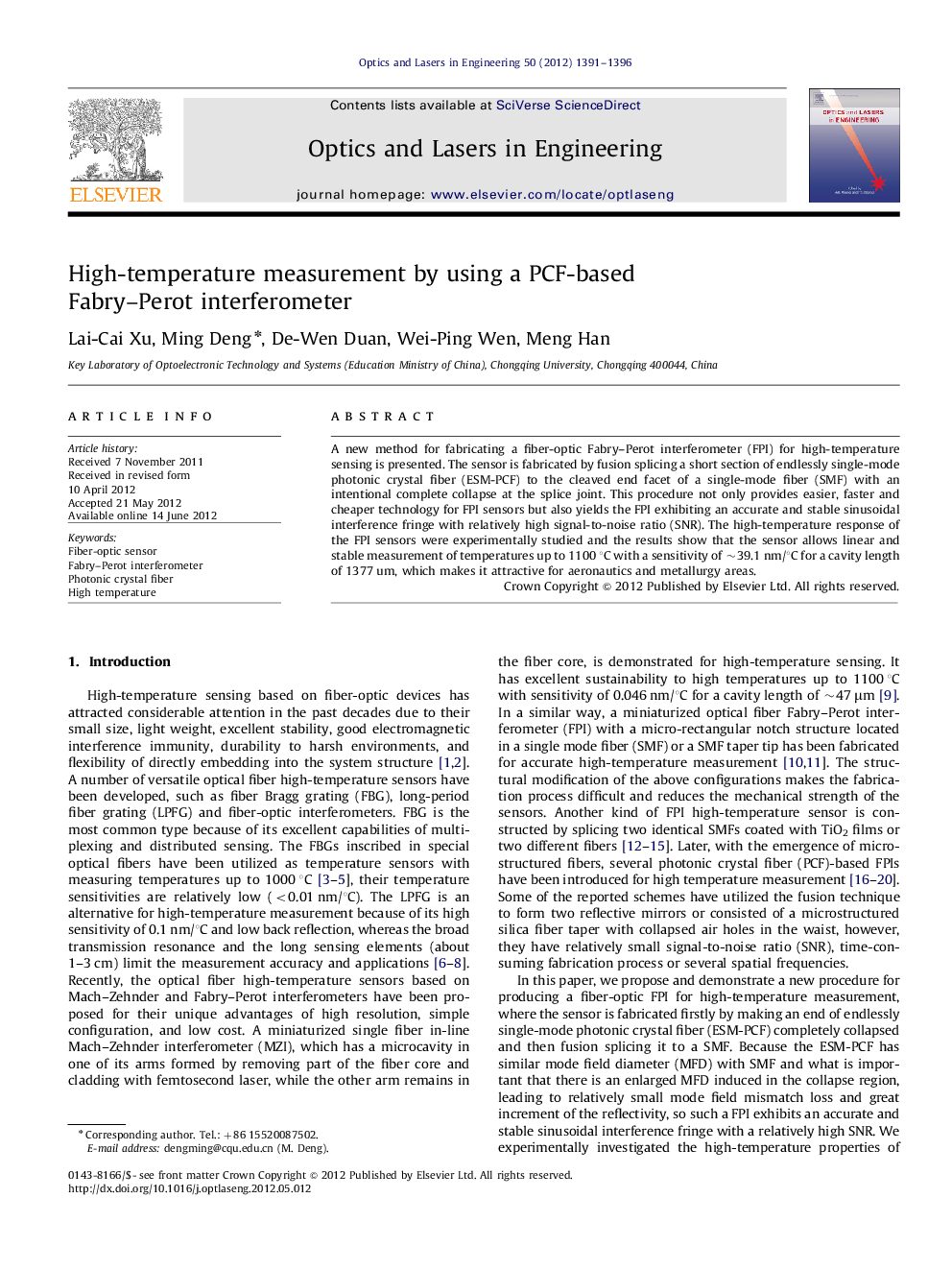| Article ID | Journal | Published Year | Pages | File Type |
|---|---|---|---|---|
| 735301 | Optics and Lasers in Engineering | 2012 | 6 Pages |
A new method for fabricating a fiber-optic Fabry–Perot interferometer (FPI) for high-temperature sensing is presented. The sensor is fabricated by fusion splicing a short section of endlessly single-mode photonic crystal fiber (ESM-PCF) to the cleaved end facet of a single-mode fiber (SMF) with an intentional complete collapse at the splice joint. This procedure not only provides easier, faster and cheaper technology for FPI sensors but also yields the FPI exhibiting an accurate and stable sinusoidal interference fringe with relatively high signal-to-noise ratio (SNR). The high-temperature response of the FPI sensors were experimentally studied and the results show that the sensor allows linear and stable measurement of temperatures up to 1100 °C with a sensitivity of ∼39.1 nm/°C for a cavity length of 1377 um, which makes it attractive for aeronautics and metallurgy areas.
► New method for fabricating a fiber-optic Fabry–Perot interferometer (FPI) for high-temperature sensing. ► The FPI exhibiting higher signal-to-noise ratio than existing PCF-based FPI sensor. ► The excellent thermal stability of the sensor at high temperature. ► Coating film can improves the performance of the sensor.
